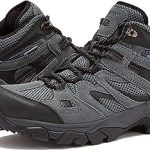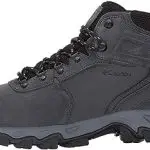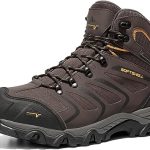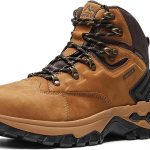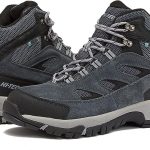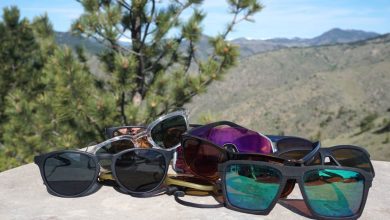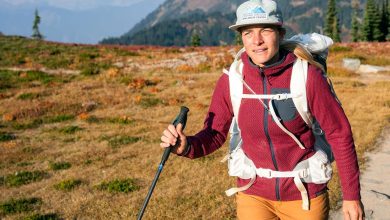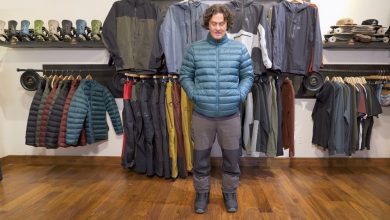Trekking and Hiking Boots: Buyer’s Guide
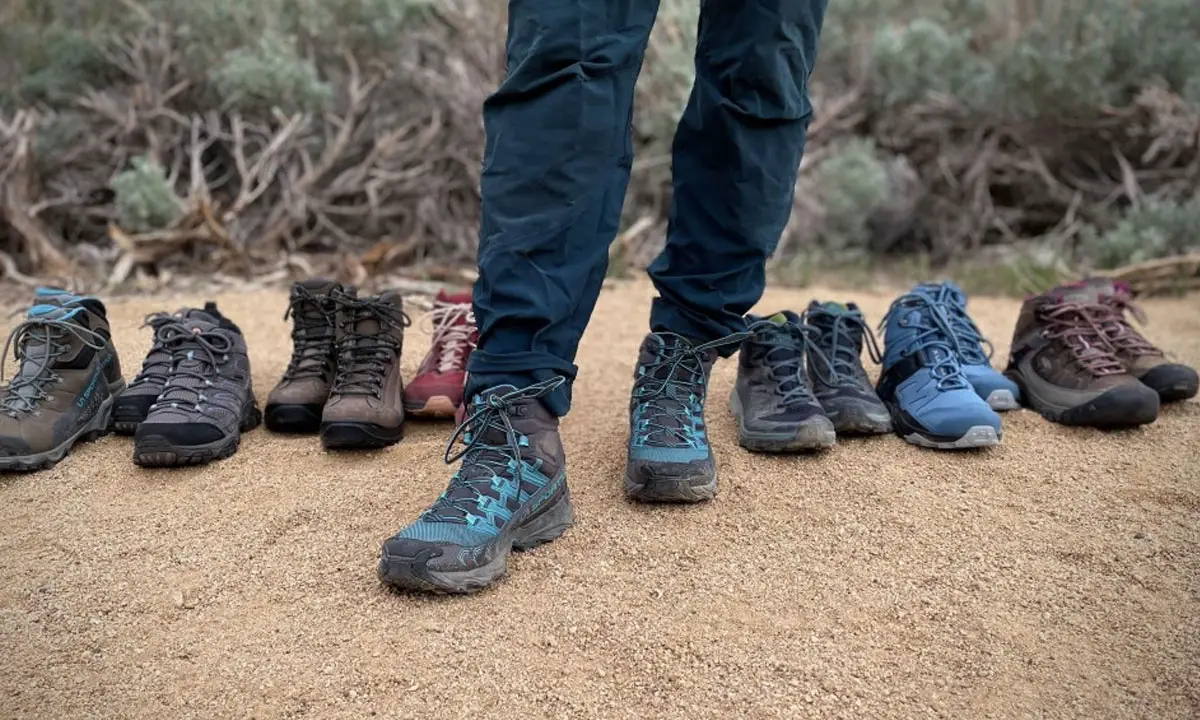
Trekking and hiking is an art form that requires physical and mental strength. But it also requires a list of equipment to make this arduous process much easier. If you have the right gear and the right amount of determination, then you can trek or hike anywhere.
Sure, the right environment for the trekking and hiking trail and the right weather make the trekking or hiking adventure easier. But, one thing is common in almost all trekking and hiking sites worldwide. And that is, trails are rough, especially on our feet.
Rocks, loose soil, inclination, snow, ice, water, wind, glacier, etc., many come into play depending on the location we decide to trek or hike. All these factors make walking hard, and the strain can be directly felt on your feet, legs, and eventually on your whole body.
So, investing in a good pair of trekking and hiking boots should be anyone’s priority before undertaking any adventurous trekking and hiking destination.
Keeping that in mind, read along with this informative article as we talk all about trekking and hiking boots and the correct ways to choose them to make your next trek or hike easy on your lovely feet.
5 Best Trekking Boots
What kind of boots to use for trekking and hiking?

Trekking and hiking boots are very different from regular boots. In addition, these boots can be considered a completely different genre than others in the market.
While going on a trek or a hike, you must look for durable and waterproof boots that completely insulate your feet and portion of your legs. The trekking and hiking boots should also be very comfortable, and if you are trekking in colder areas like the mountains, it must be warm too.
One thing to remember while searching for the kind of boots to use for trekking and hiking is more than the brand of the boots. It would help if you focused on the condition of the trail you are going to trek or hike and the anatomy and requirement of your legs.
But remember to avoid very stiff and heavy boots available because they might slow you down, so choosing the right kind is very important. Additionally, you might want to invest in something that is lightweight but gives you ample support.
Okay, let us look at the various types of trekking and hiking boots to understand the different kinds available.
Day Trekking and Hiking Boots
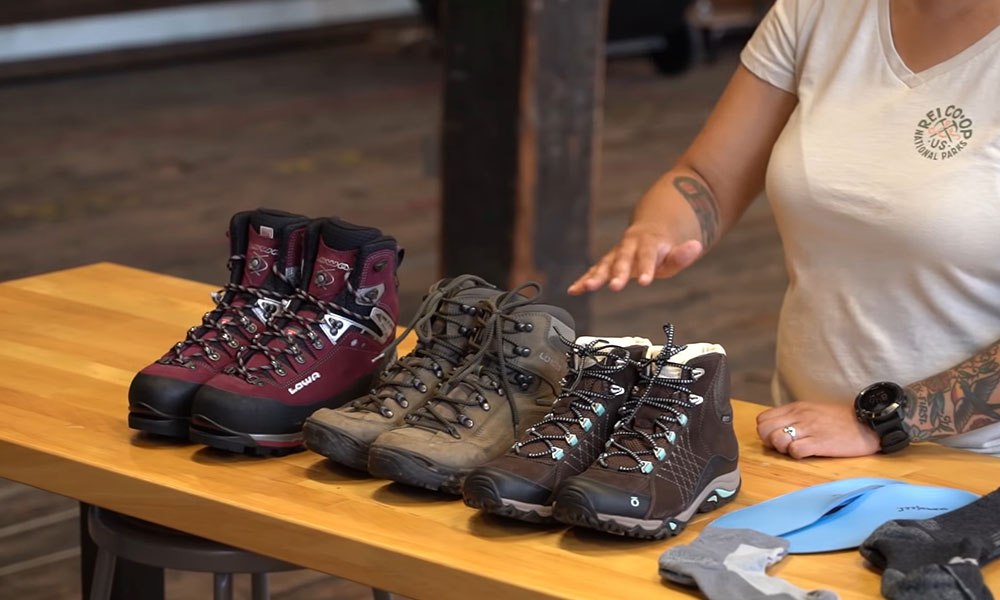
As the name suggests, day trekking and hiking boots are made for short treks or hikes. They can also be worn during backpacking if you have a lightweight.
These boots are great because they come in both high to mid-cut lengths and do not need to be worn for a long time to make them comfortable. In addition, they can be flexed easily. However, they are less durable and supportive than other more advanced boots.
Backpacking Boots
Backpacking boots are the OGs in the trekking and hiking boots department. Unlike the day trekking and hiking boots, they are meant to be worn for walks on tough terrains. Backpacking boots are high cuts and fit snugly on the ankles maximizing support.
Also, these boots are very supportive and durable and have much stiffer midsoles than other regular boots. However, they tend to be a tad bit heavy.
What are the various parts of trekking and hiking boots?
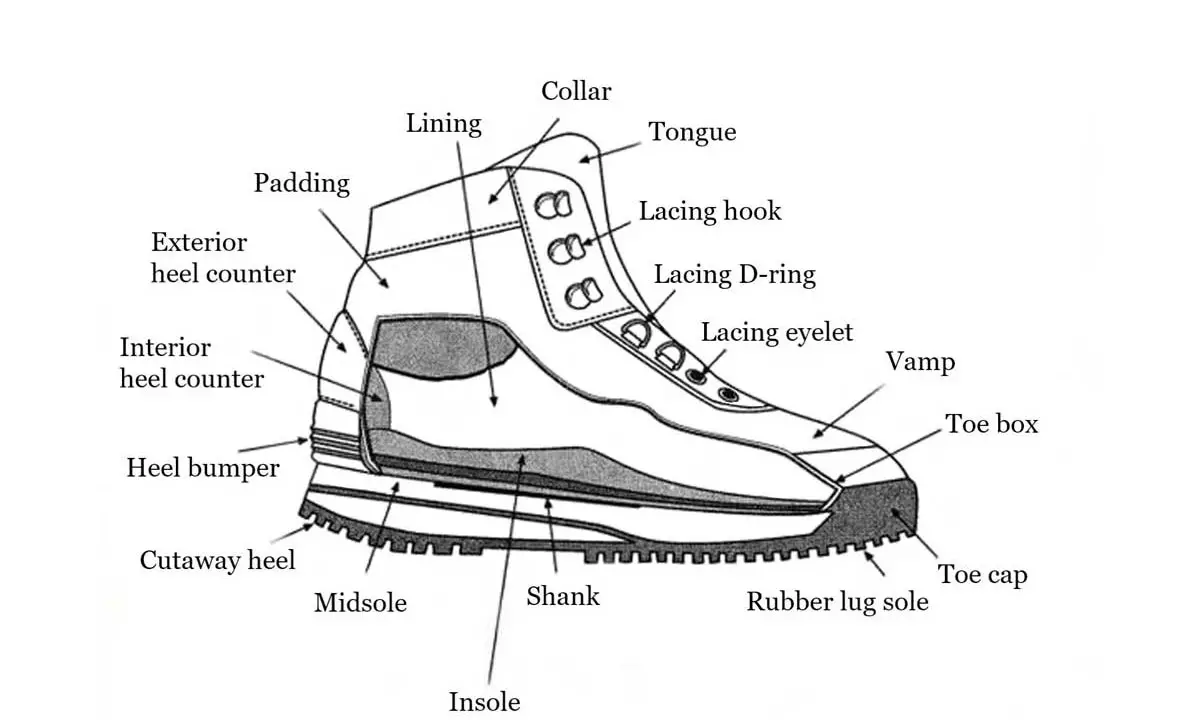
A trekking and hiking boot has various important parts. Understanding these parts and their functions allows us to choose the right trekking and hiking boots.
The Upper
The upper is the portion of a trekking and hiking boot covering its top surface and sides. In addition, it also covers the heel and the toe region.
While looking for a good trekking and hiking boot, look for a lightweight and wear-resistant upper. Materials such as nubuck, suede leather, and synthetic fabrics make a good quality upper.
The Reinforcement
A reinforcement is added to strengthen the upper layer and increase its stress-bearing capacity. In addition, it can also increase the fit, flexibility, and support of the boot. Finally, reinforcement can also protect boots from abrasion.
The Rand
Another layer that protects the upper is the rand, made of PU-coated leather or rubber. It helps to protect the lower ends of the upper from the adverse effects of scree and rocks.
The Last
If we have to define a last, we can define it as the model of a foot with which the whole boot is designed from. The last determines the characteristics and the fit of the boots. Often, a last differs according to activities for which the boots will be used and gender.
The Outsole
As the name suggests, the outsole is the outer part of the sole. This part comes directly in contact with the outside surroundings. So, to make it sturdy, an outsole is often cemented to the boot.
The tread pattern of the sole or the overall design plays an important part in increasing the durability of trekking and hiking boots. A good tread pattern of an outsole has cleats, lugs, and grooves, providing ultimate traction and grip. So that you don’t slip and fall on your trail.
Ensure your boots have a high-quality insole, most likely made of premium rubber.
The Midsole
A component that is often overlooked is the midsole that lies between the upper and outsole. A midsole absorbs shocks and provides a soft, cushiony feel to your trekking and hiking boots.
It also is responsible for giving a level of stiffness to the boots. The right amount of stiff boots will increase your comfort, stability, and precision, especially during a hard climb.
A good midsole is made from EVA (ethylene vinyl acetate) or nylon. If your next great trek or hike is in the mountainous region, then you might want to buy a boot whose midsole is made from nylon since nylon increases the durability and firmness of the boots.
However, the EVA midsole is a safe bet if you are looking for light boots with ample cushioning. You can also find many trekking and hiking boots with durable cushioning, ergonomic design, and amazing shock absorption capabilities.
The Insole
A layer above the midsole and the sole unit is the insole. It is one of the most important parts of the boot and has the same shape and size as the last’s bottom part. It serves as the foundation of a good trekking and hiking boot.
The Climbing Lacing
Trekking and hiking boots which are made by keeping in mind the climbing lacing, serve an increase in precision and accuracy, especially to adjust the toe area according to your requirement.
The Tread Design
A tread design that has well-designed lugs is considered to be of optimal quality. If your next hiking or trekking trail is smooth, you might want to buy boots with wide and shallow lugs.
However, if your trail is rugged, look for tread designs with deep lugs with jagged outer lugs.
The Heel Break
Some trekking and hiking boots may also have heel breaks at the upper backside, reducing the chance of slipping and falling, especially during a difficult climb.
Are leather and synthetic boots good for trekking and hiking?
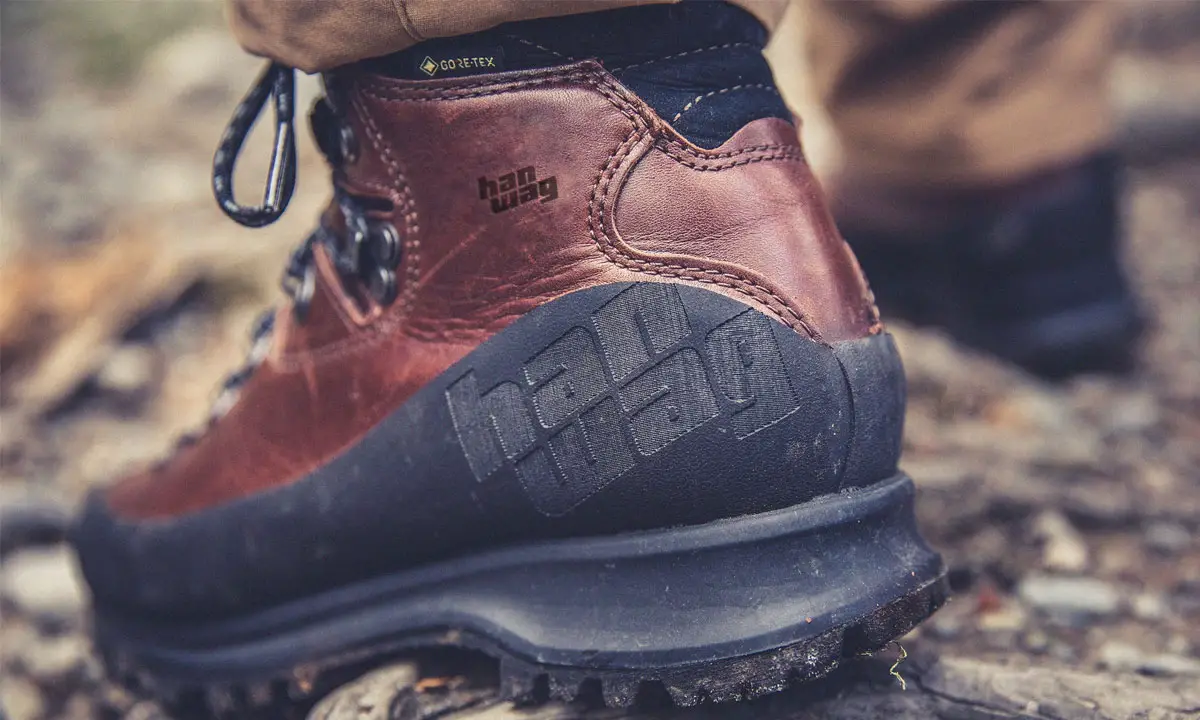
There are mainly two types of materials that make trekking and hiking boots. Let us discuss them to know more about these interesting materials.
Leather Boots
Many trekkers and hikers prefer their boots to be made of leather. The common types of leather that make trekking and hiking boots are nubucks, full-grain leather, and reverse full-grain leather. Boots made out of leather are durable, resilient, and sturdy.
In addition, leather boots are breathable. Waxing these boots in an appropriate amount can also make them waterproof. Compared to boots made mainly from synthetic materials, leather boots can withstand abrasion much more easily. They can also last a very long time, even decades.
Leather boots can provide ample heat, especially during winter, and the more you wear these boots, the more comfortable they become, as they can mold according to your feet.
Compared to synthetic materials, the disadvantages of leather boots are that they can be more expensive, heavy, and require more care and maintenance. Also, they can take time to break in properly and be less breathable the more waterproof they are made.
Synthetic Boots
Nylon and polyester are the main synthetic materials for hiking and trekking boots.
Compared to leather boots, synthetic boots are inexpensive, take a short time to break in, and require less care and maintenance. Also, they allow ample airflow decreasing the chance of blister formation. Furthermore, they are extremely lightweight.
As good as synthetic materials are, they aren’t waterproof and do not last as long as leather. Also, during the winter season, they aren’t as warm.
What are the differences between trekking and hiking boots and shoes?
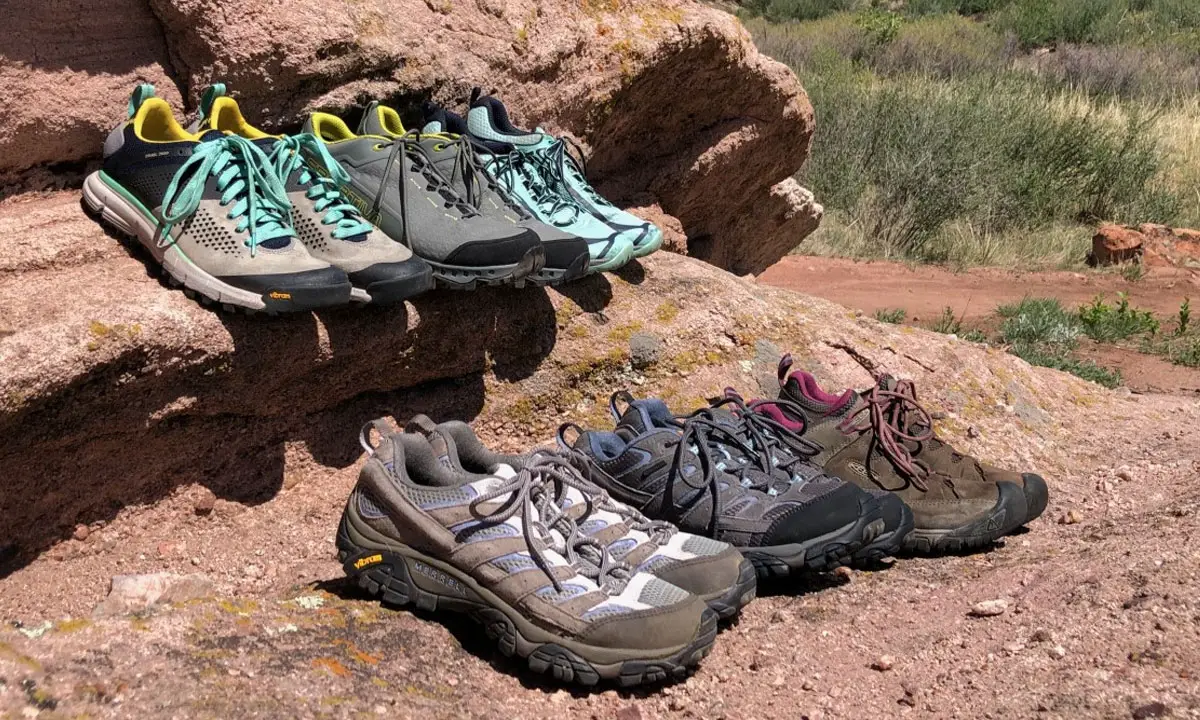
The difference between trekking and hiking boots and trekking shoes can be very confusing. Both of them serve the same purpose, right? Well, yes, but these two are completely different, at least in some aspects.
If you are trekking or hiking where the landscape is very rugged, or you have to walk for days, let us say you are going on a trek in a stunning mountainous region like Nepal. Trekking and hiking shoes wouldn’t cut it.
Also, most waterproof trekking and hiking shoes need to be sufficiently breathable. Additionally, shoes take a long time to dry once they are wet, and if they are waterproof, the time may increase further.
So, you must invest in a nice and sturdy trekking boot.
Difficult terrains that are slippery and have high amounts of rocks, debris, ice, etc., demand a trekking boot. Also, boots are warmer than shoes, so if going on a trek where it is most likely to be chilly, wearing a trekking boot would be much more comfortable than just mere shoes.
Sure, trekking shoes are wearable while going on a day hike or backpacking, but tougher trails require a substantial purchase of good trekking boots.
How to break in trekking and hiking boots?
Breaking in trekking and hiking boots before wearing them on your trail is important. Often these boots are made of a firm and thick midsole, and if you wear this directly to your adventure, it might cause some difficulty.
The way to break in these boots is easy; wear them regularly. You can wear these to work or even around your house. Wear these to buy groceries or go on a date. But wear them as much as possible before taking these bad boys to the real deal.
How to find the right fit for trekking and hiking boots?
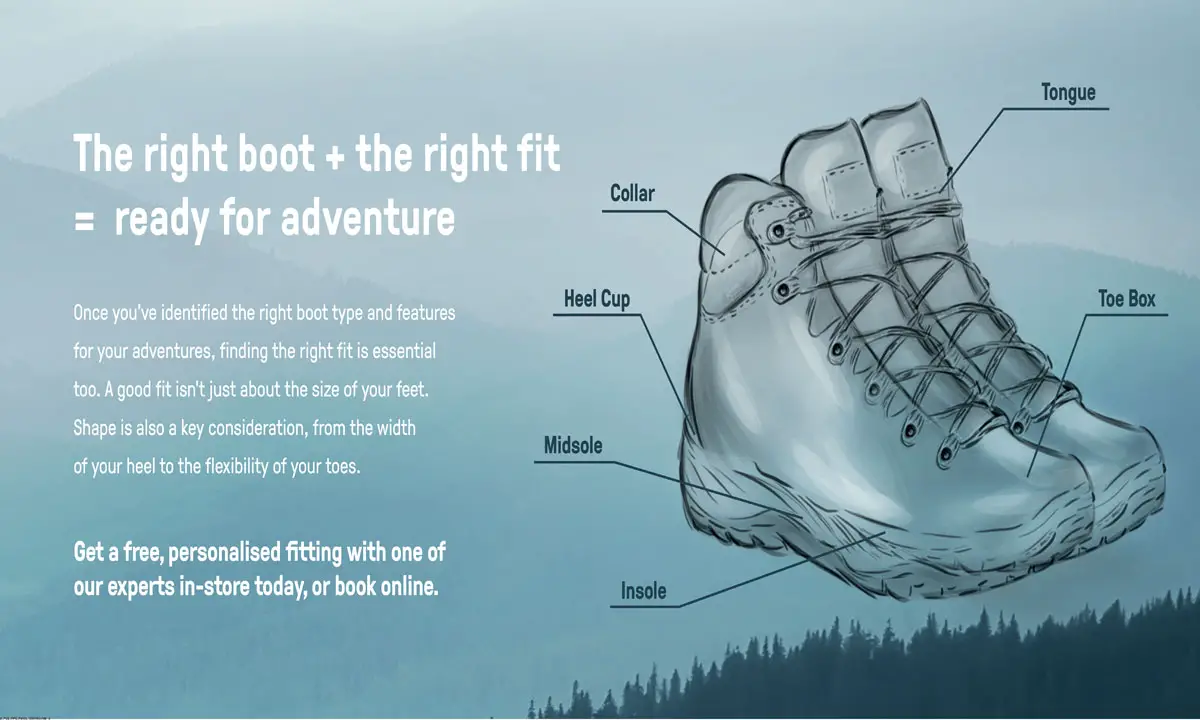
The best advice we can give you while purchasing the right trekking and hiking boots is to find the right fit. The right trekking and hiking boots will fit you like a second skin while also having room for your toe to wiggle in.
The right way to find the right fit in trekking and hiking boots is to wear them at the end of the day while also wearing the socks you will wear on your actual trek or hike.
Before buying the correct trekking and hiking boots, measure your feet’s length, width, and arches properly, preferably by following the REI-prescribed calibrated fit device. To make things easier, you can also measure your feet by visiting rei.com.
Also, a tip to remember is that if you are a regular wearer of orthotics, always check the effect of the boots on your feet. How you lace up your boots also determines how the trekking and hiking boots fit your feet.
How to choose trekking and hiking boots?
Okay, after learning about the various things to consider while buying your new trekking and hiking boots. Let us look at some important things to consider while buying boots.
- Look for trekking and hiking boots that have strong lace loops.
- Cushions must be present at the soles to give relief to your feet as much as possible.
- Check for durable stitch points that last a very long time.
- Make sure to look for stiff soles with a shank. For example, you can go for boots with Vibram soles.
- A boot that has a layer of rubber around the toe and maybe the heel area adds to the durability of the trekking and hiking boots.
- Trekking and hiking boots must have a lining of gore-tex or similar fabric that makes it waterproof.
- While looking for the tongue of the boots, ensure that it is sewn in to add to the waterproof factor of the boots.
So, you need to know everything about choosing your next best trekking and hiking boots.
Happy adventure!
Read also:
